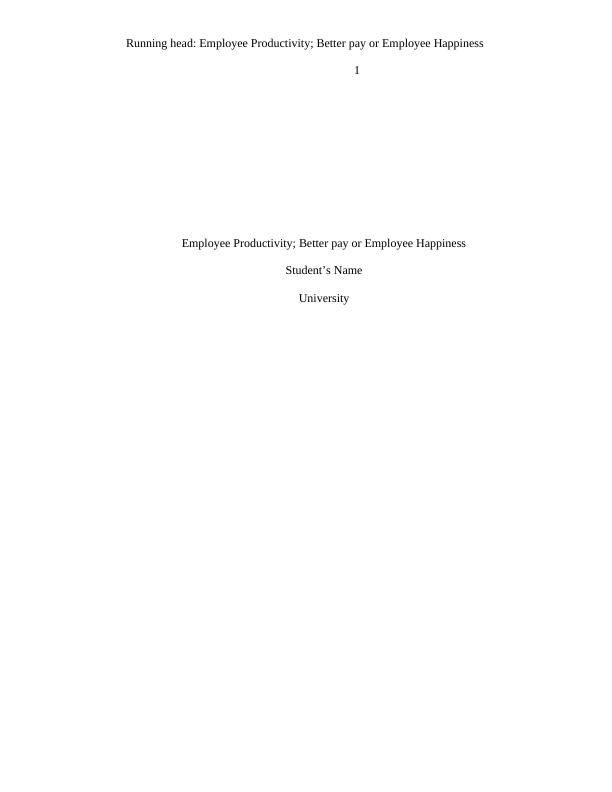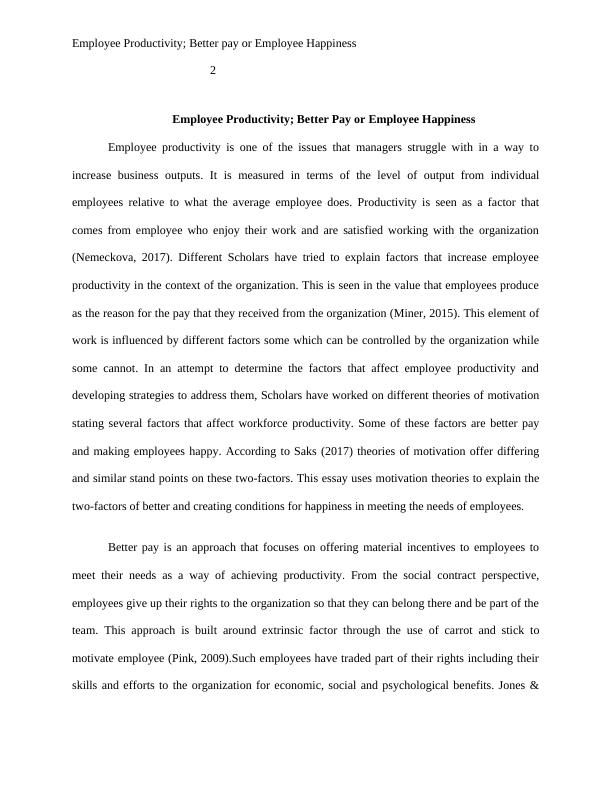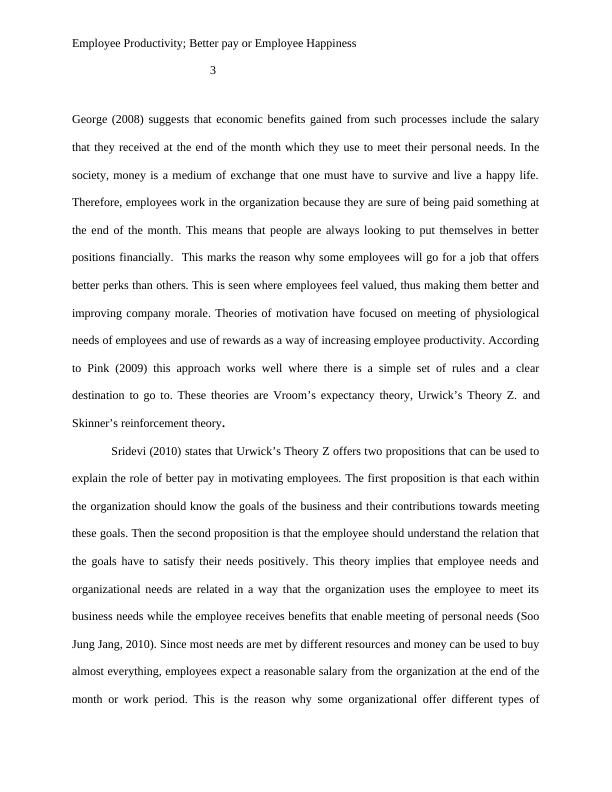Employee Productivity; Better pay or Employee Happiness
Using motivational theory and empirical evidence, argue which statement is more accurate: 'better pay motivates employees to be more productive' or 'happy employees are productive employees'.
10 Pages2980 Words250 Views
Added on 2023-06-12
About This Document
This essay explores the factors that affect employee productivity and the role of better pay and employee happiness in meeting the needs of employees. It uses motivation theories to explain the two-factors of better pay and creating conditions for happiness.
Employee Productivity; Better pay or Employee Happiness
Using motivational theory and empirical evidence, argue which statement is more accurate: 'better pay motivates employees to be more productive' or 'happy employees are productive employees'.
Added on 2023-06-12
ShareRelated Documents
End of preview
Want to access all the pages? Upload your documents or become a member.
[PDF] Importance of Employee Motivation
|4
|786
|102
The Only Thing That Affects Employee Motivation is the Level of Pay
|8
|2078
|110
Persuasive/Argumentative - Essay
|9
|2829
|208
Common Misconceptions about Employee Motivation
|7
|1465
|86
Employee Motivation: The Power of Intrinsic and Extrinsic Factors
|8
|2070
|345
Effectiveness of Pay for Performance Schemes in Employee Motivation
|7
|2075
|490



